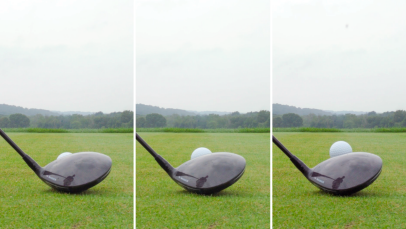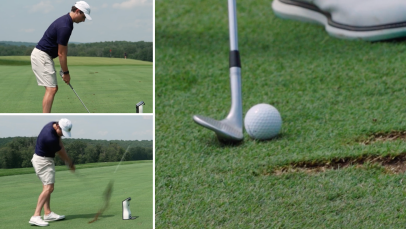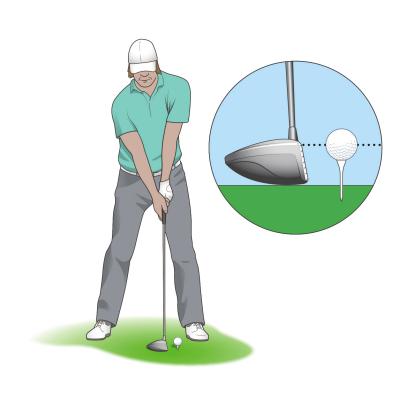Does walking without carrying your bag lead to lower scores? What our modest test reveals – Australian Golf Digest

- by Admin
- September 12, 2024

Welcome to MythBusters, a Golf Digest series where we explore answers to some of golf’s most common questions through a series of tests with real golfers.
The COVID years were a challenge, but it did have benefits for golf. As a welcome respite and safe activity that brought scores of new players into the game, it helped revive many clubs and courses that were struggling. It was also a time when access to carts was limited, forcing many golfers to walk. What many found was it was a more enjoyable way to experience the game.
I’ve long preferred walking, usually carrying my own bag. Yet hoofing and lugging my sticks at age 63, reminded me of the old Toby Keith song, “I’m not as good as I once was.” Sure, I could make it 18 or even more. But it was tiring, and at my club, caddies are not an option.
The next best thing was, however. Remote-controlled carts have become de rigueur at my club, with some 20 players using them. That included everyone in my regular foursome but me. One day one of them had to ride due to injury and let me try his MGI Zip Navigator cart. At the end of 18 I felt far less tired—and was determined to take the plunge. Also, as a stats nerd, I was interested to see if this translated into better golf.
RELATED: The best golf pushcarts
More Mythbusters Golf Digest Logo Does a higher tee really produce more distance? What our test reveals  Golf Digest Logo Does a clean clubface really matter? What our test reveals about dirty clubs and spin
Golf Digest Logo Does a clean clubface really matter? What our test reveals about dirty clubs and spin  Golf Digest Logo Tee it high and let it fly? Not really Our test
Golf Digest Logo Tee it high and let it fly? Not really Our test
To call what I did a “test” suggests a thorough methodology, but there was a process. Track hole-by-hole my last 10 rounds walking and carrying and my next 10 rounds using the MGI Zip Navigator cart. For those who haven’t seen such a cart, it looks very much like a pushcart but folds down to fit in the trunk of your car. It’s about 15-to-20 pounds and has a remote control that allows it to go forward, backward, right, left and stop. You can easily send it 75 yards in front or in back of you and still have control.
I did not count 9-hole rounds, nor any rounds in riding carts. I also eliminated any rounds where weather was a factor. In short, I was looking for apples to apples as much as possible, even if some were MacIntosh and some were Gala.
What we found
Statistically, there was a fair amount to look at. My stroke average on the front nine was modestly better (41.6 average to 41.9) while carrying. The back nine was a different tale, as walking with the remote-controlled cart produced a 41.6 average compared to 43.9—a 2.3-stroke difference.
Clearly carrying the bag was wearing me out over time. It might not seem like a big difference, but picking up and setting down a bag loaded with 14 sticks, half a dozen balls, tees, ball markers and a rangefinder some 50-plus times a round (I don’t hit many greens these days), takes a bit of effort and exertion.
Digging deeper into the numbers, the final three holes, in particular, were eye-opening. Anecdotally I knew I got tired late in rounds while carrying. I just didn’t know how much. The last three holes are a lengthy par 4 that is all uphill for the first 220 yards, a sturdy par 5 that’s also uphill for the last 200-plus yards and a solid par 3 of about 170 yards over water. Over the 10 rounds carrying I was, well, a disaster on those holes with 10 double bogeys, one triple and just four pars. Round killers, to be sure.
Walking without the burden of the bag on my shoulder, those numbers became just two doubles and a dozen pars. Pretty handy stuff when you’re playing Vegas, which is our game of choice.
What it means
Interestingly, my handicap did not really shift, pretty much always residing in the 10.5 to 11.5 Index range. But Index is based on the est eight of 20. What my little experiment showed was I was more consistent with the remote-controlled cart. Walking and carrying produced scores ranging from 80 to 92 with four at 88 or higher. With the cart the range was 82 to 86, the avoidance of blow-up holes late in the round a boon to the bottom line on the scorecard.
What it doesn’t mean
As the saying goes, your mileage might vary. If you’re a strapping 20-, 30-, 40-something who keeps themselves in good shape rather than devouring an entire bone-in ribeye (marrow and all), carrying might not have as deleterious an effect. We also cannot say with any certainty it’s any better for your game than riding in a cart. We’ll save that experiment for another day.
Verdict
So does a remote-controlled cart lead to better golf? It did for me and more importantly, I’m enjoying walking a helluva lot more than when I was carrying. What I can tell you is a remote-controlled cart is like playing with a caddie except you don’t have to worry about it keeping up or giving you a bad yardage or read—and the 20 guys at my club all swear by them, including “The Beast,” an 82-year-old I regularly play with who simply loves to walk.
That said, a few words of wisdom. While the MGI Zip Navigator is great, there are numerous options in this field (Stewart Golf makes an outstanding version). Most offer accessories like umbrella holders or even seats (definitely get this—not doing so was a big whiff on my part). Finally, pay attention. You are in control of the vehicle. Don’t get distracted by the beverage-cart attendant for too long or instead of a cold beer you’ll be fishing your vehicle out of the creek or bunker. Not that that has ever happened to any of my friends.
This article was originally published on golfdigest.com
The Latest News
-
November 15, 2024Australian World Cup penalty hero Vine takes mental health break
-
November 15, 2024Nick Kyrgios Set for Electrifying Return to Tennis at Brisbane International | Sports-Games
-
November 15, 2024The schools of great knocks: Where Australia’s Test cricketers were educated
-
November 15, 2024Former Sri Lanka cricketer Samaraweera gets new 10-year Australia ban
-
November 15, 2024Former Test cricketer handed second ban over allegations of inappropriate behaviour





